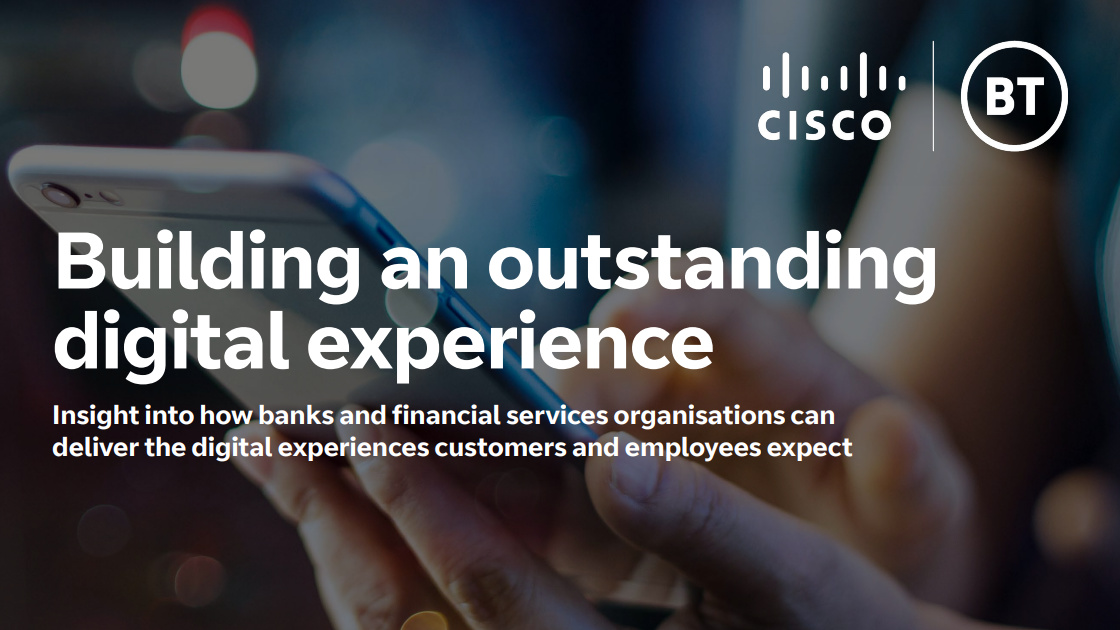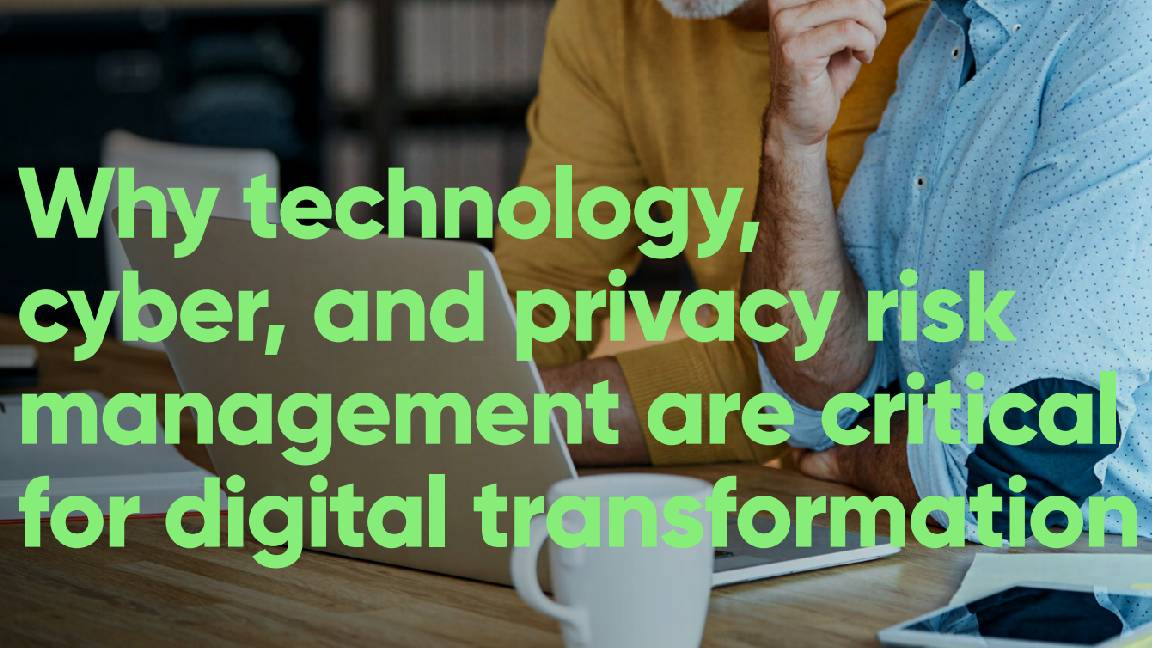Why digital experience is vital for success
We examine the ever-changing expectations of today's consumers and why their digital experience is so important

Technology continues to be an advancing force, amplified in recent years by the COVID-19 pandemic, bringing greater digital experiences into our daily lives.
These technological innovations, with smart technology and intuitive devices appearing in our homes, as well as smarter methods of collaboration and communication in our work, have raised the bar when it comes to customer expectations.
As we move forward in this digital era, a positive digital experience is no longer "added value"; businesses should be offering this as a basic standard.
In a survey conducted by PwC in 2022, 51% of consumers said they would switch brands based on a poor digital experience, and with customers more discerning than ever, this should encourage companies to review their interactions and focus on how to improve their digital engagement.
But what does a good digital experience look like, and why do they matter?
What is digital experience?
A digital customer experience (DCX) refers to how a customer interacts with an organization through its digital touchpoints: websites, mobile apps, or social media platforms. This also includes multiple interactions - for example, where a customer may have ordered a product online, and then spoken to the customer service team via a chatbot regarding the order.
It is very much part of the entire customer experience (CX) and it's important to consider how each individual interaction can contribute to the customer's overall perception of the organization
Get the ITPro daily newsletter
Sign up today and you will receive a free copy of our Future Focus 2025 report - the leading guidance on AI, cybersecurity and other IT challenges as per 700+ senior executives
Why is digital experience important?
In brief, customers are demanding more. They're much more savvy when it comes to prices and products and where to get the best deals, so to stand out from the competition, it's the digital experience that needs to be the reason customers return.
RELATED RESOURCE

Learn how to deliver the digital experiences customers and employees expect.
A report from PwC found that 73% of customers rated their digital experience as the most important factor in their buying decisions, surpassing price and product quality, and Smith.AI cites that companies offering better experiences can gain 17% more growth than competitors.
Long-term, better customer experiences equate to higher customer retention, higher lifetime customer value, and greater brand equity, with consumers prepared to pay a 16% premium for a better service.
The costs of bad digital experience
But what happens if you don’t make digital experience a priority?
It’s important not to cut corners when it comes to creating the seamless, personalized experiences every customer expects, particularly when your customers are the whole reason your business exists in the first place.
And in an experience-driven market, you have to compete to stay afloat. According to Invesp, 89% of customers who are leading the way in customer retention and loyalty say it's down to the experience they provide.
And when 63% of customers will stop doing business with brands that don't get it right, the focus needs to be on enhancing those personal digital connections. UK brands that don't risk losing nearly £15 billion a year if they don't.
What are customers looking for in a good digital user experience?
Now that we’ve weighed the advantages and disadvantages of digital customer experience transformation, let’s take a closer look at what you should be trying to achieve with your transformation.
How customers perceive interactions with your brand is everything. You want them to come away feeling that they had an easy, frictionless, and delightful experience.
Interactions need to be consistent across all channels, whether physical or virtual because people perceive these various interactions as one experience. For this reason, it’s also important that each engagement is based on earlier ones rather than siloed, taking into account previous activity and purchases. This personalization is essential, with customers saying that ‘being treated like a person’ is important to winning their business.
Ensure that your interactions are also immediate and conversational. Don’t let too much time lapse after a sign-up, a purchase, or an email before you engage with your consumer in a real way. No one wants to feel like just another number, so make sure you have a comprehensive view of each customer to show them that they matter.
Your digital experience shouldn’t stop at how you interact with customers. Besides personal, seamless experiences to show customers they matter, you might take a look at what your business offers. Customers prefer brands that are constantly innovating, so consider how your company could find new ways to meet customer needs.
Next steps in your digital experience transformation
Despite increased expectations, about half of customers report that these expectations aren’t being met. The opportunity is there for the companies that are willing to jump into transforming their digital user experience and standing out in a crowded marketplace.
Now that we’ve broken down the reasons why you should consider this transformation, take a look at this quick guide on digital transformation quick-wins – simple steps that every business can try to quickly overhaul their operations, and their customers' experience.
-
 Should AI PCs be part of your next hardware refresh?
Should AI PCs be part of your next hardware refresh?AI PCs are fast becoming a business staple and a surefire way to future-proof your business
By Bobby Hellard
-
 Westcon-Comstor and Vectra AI launch brace of new channel initiatives
Westcon-Comstor and Vectra AI launch brace of new channel initiativesNews Westcon-Comstor and Vectra AI have announced the launch of two new channel growth initiatives focused on the managed security service provider (MSSP) space and AWS Marketplace.
By Daniel Todd
-
 IDC InfoBrief: Sustainability doesn’t need to be all stick and no carrot
IDC InfoBrief: Sustainability doesn’t need to be all stick and no carrotwhitepaper CIOs are facing two conflicting strategic imperatives
By ITPro
-
 Why technology, cyber, and privacy risk management are critical for digital transformation
Why technology, cyber, and privacy risk management are critical for digital transformationWhitepaper Reduce costs while delivering seamless experiences by connecting your teams, systems, and digital workflows on a single platform
By ITPro
-
 Put AI to work for talent management
Put AI to work for talent managementWhitepaper Change the way we define jobs and the skills required to support business and employee needs
By ITPro
-
 Untethered: How CIOs and CISOs are paving the way for the new hybrid workforce
Untethered: How CIOs and CISOs are paving the way for the new hybrid workforceWhitepaper Effective techniques to transition from exposed legacy infrastructure to an effective zero trust strategy
By ITPro
-
 Creating successful supply chain planning transformations in the consumer industry
Creating successful supply chain planning transformations in the consumer industryWhitepaper Think differently about SCP transformations and, in doing so, move into a better future for supply chains
By ITPro
-
 How to stay ahead of ever-changing cybersecurity risks in banking
How to stay ahead of ever-changing cybersecurity risks in bankingWhitepaper Discover how you can strengthen your cyber resilience
By ITPro
-
 Customer experience (CX) trends
Customer experience (CX) trendsWhitepaper Customer service insights in the GenAI era
By ITPro
-
 Deliver experiences customers crave
Deliver experiences customers craveWhitepaper The three imperatives for leaders’ approach to CX in 2024
By ITPro